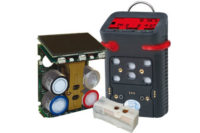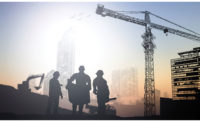He became dizzy and passed out, falling off the ladder to the bottom of the tank, where he drowned. His supervisor, noticing the employee was missing, climbed into the tank to look for him, succumbed to the same poisonous vapors and also died.
This is a recurring problem with confined spaces - the lives of not only the original entrants but also the rescuers are lost. Employees, and sometimes supervisors, fail to recognize that using hazardous chemicals in a confined space, where they can become lethal, is far different than working with them in an open room.
Here are seven rules to follow to help ensure that the "domino effect" in confined space tragedies is avoided:
1) A strong crew
A highly trained response crew is the essential element in a safe entry of a confined space. They should all know the confined spaces that have been identified in the workplace.2) Post a permit
If the confined space contains potential hazards, such as toxic vapors, OSHA regs require that a permit be issued and posted outside of the space before anyone enters. The permit lists the hazards found in the space, the measures used to eliminate or control them, and the rescue services and communication systems to be used.3) Test the air
Before entering a confined space, conduct atmospheric testing. Be sure that there is enough oxygen to breathe (at least 19.5 percent of the air), and be wary of a combustible atmosphere. Vapors from flammable chemicals such as solvents can build up and become explosive. Toxic chemicals may be present and are deadly at certain levels.
Employees should know how to use, maintain and calibrate test monitors. If there is a problem in the air, ventilate the area.
4) List of precautions
Workers must take these other precautions:
- Alert the rescue team and set up rescue equipment.
- Make sure a co-worker is immediately outside the space and in direct communication with the employee. The co-worker cannot leave this post and should have a lifeline or harness to pull the employee out in case of trouble.
- Lockout or tagout any equipment that may affect the space.
- Ventilate the area continuously and constantly test the atmosphere.
- Use only grounded, explosion-proof tools and equipment in the space.
- Tell workers to leave the space immediately if they feel weak or nauseous.
5) Dress for success
Everyone should wear appropriate personal protective equipment (PPE), depending on the type of confined space and the hazards anticipated. When toxic gases are present or there is a lack of oxygen, entrants should use an appropriate respirator.6) Emergency plan
Have an emergency plan in place so that rescuers know their roles. Have equipment on hand, such as tripods and winches, that can pull an employee out of danger without putting a rescuer in jeopardy.7) Paper trail
In addition to posting your entry permit outside the space, also post danger signs warning others to stay out. OSHA requires that once the job is over, the cancelled permit be kept on file for at least one year. You will also need to keep a written certification that your employees have been trained in confined space safety procedures.Originally written for Business & Legal Reports by freelance editor Marcia Wagshol, who contributes regularly to BLR's OSHA Required Training for Supervisors and BLR's Monthly Reminder. Marcia has also written for Ransom & Benjamin Publishers and Business Research Publications.

